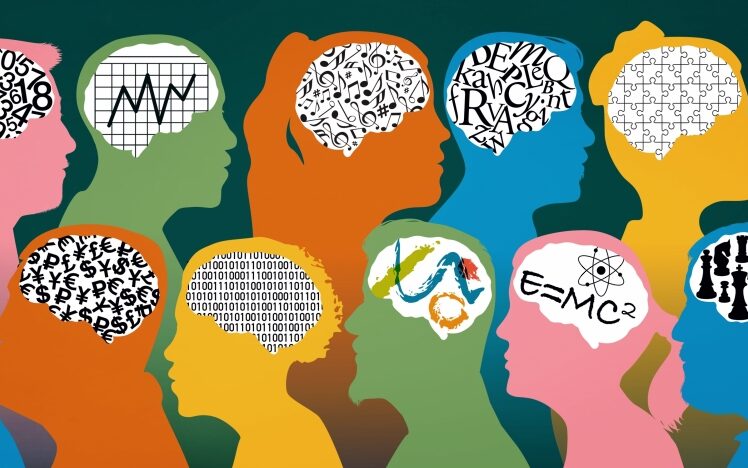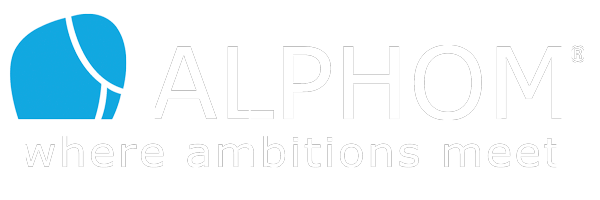
15 May Why is neurodiverse talent overlooked and what can businesses do about it?

Ask any leader today whether their organisation values diverse ideas and creative thinking and you are likely to hear a categorical yes. Ask whether their organisation has recently hired or promoted individuals on the autism spectrum, with dyslexia, or ADHD (attention deficit hyperactivity disorder) – to mention just a few neurodiverse conditions – and you are likely to hear a different answer. Yet, many of the individuals with such conditions excel in exactly the ‘outside of the box’ thinking that organisations long for.
What is neurodiversity?
Although different in a number of respects, the conditions mentioned above have recently come under the term ‘neurodiversity’. Coined by the sociologist Judy Singer in the late 1990s, the term neurodiversity captures disabilities that are not physical, intellectual nor psychiatric, the three categories that had long been used to describe the disability spectrum. Instead, Singer calls them ‘disabilities of social interaction’, to emphasise that they arise from expectations that others have about how ‘normal’ individuals ought to behave in social contexts.
In the workplace, these expectations can range from working in an open plan setting to ensure constant connectivity with colleagues, to participating in long meetings with many participants; from sustaining eye contact while speaking, to answering open questions in a competency-based hiring or promotion interview.
If you read this and think that these expectations are in fact ‘normal’, you have identified the main pain point of neurodiverse individuals, as such expectations prevent them from showcasing their strengths.
Indeed, it is the combination of oftentimes higher than average creativity, analytical and problem-solving capabilities coupled with lesser organisational and people skills that make these individuals look different in ways that cannot easily be reconciled with our expectations about typical employee profiles.
Research in social-psychology tells us that when individuals do not neatly fit in behavioural categories considered ‘typical’, they are more likely to be excluded. For neurodiverse individuals, their atypicality translates into lower employment and chances for promotion. For instance, only about 16 percent of the adults on the autism, while in the US an ADHD diagnostic results in a reduction in employment chances by 10 to 14 percent and a 33 percent pay gap. The promotion chances of neurodiverse individuals are even bleaker.
The case for neurodiversity in business
While the business case for diversity has unequivocally established the link between diversity of thought and organisational creativity and innovation, it is surprising that neuro-diverse individuals, who literally think differently, would encounter some of the lowest levels of employment, pay and promotion.
This aspect is part of a wider puzzle in the diversity and inclusion arena: the fact that while over 90 percent of the large companies claim to prioritise diversity, only 4 percent consider disability as part of their diversity initiatives.
In the recent years, a number of organisations have started opening their doors to neurodiverse individuals not only as the right thing to do, but also to bring considerable business benefits by including neurodiverse talent.
After hiring employees on the autism spectrum in the mortgage banking technology division in 2015, JP Morgan Chase reported that within three to six months they “were doing the work of people who took three years to ramp up—and were even 50 percent more productive.”
Ernst & Young’s Neurodiversity Centers of Excellence are another example of impactful contributions made by neurodiverse individuals employed to perform complex analysis to support their client facing colleagues. When compared to neurotypical employees in the same business areas, the quality of work, efficiency and productivity were comparable; however, the neurodiverse employees excelled at innovation.
In technology firms such as Microsoft and SAP neurodiverse employees, especially those on the autism spectrum , have long been viewed as an asset. Both companies run dedicated recruiting channels and organisational training for neurodiverse talent.
Why is neurodiverse talent overlooked and what can businesses do about it?
Given that the case for neurodiversity is well established and championed by some of the most successful businesses, why do the majority of organisations fail to recruit and promote neurodiverse individuals?
In ongoing research with Esther Canonico, I have explored some of the reasons behind the employment, pay and promotion gap among individuals on the autism spectrum. While some of these reasons are specific to job candidates and employees with autism, others can be extended to other neurodiverse individuals.
One of the strongest reasons behind organisational failure to fairly consider neurodiversity is the narrow way in which their leaders look at diversity: as a desirable organisational value but not one closely linked with the skills needed to make their business successful. This narrow view has implications for hiring and promotion – two of the critical processes through which neurodiverse talent arrives in the organisation and is included and rewarded by the organizations.
How can organisations make hiring and promotion of analytical and creative talent smart?
Design and advertise jobs in a non-discriminatory way
Analytics, creativity, and problem-solving skills are top priorities for organisations, and neurodiverse candidates are often equipped with such skills. Yet, to the extent that hiring and promotion are designed without neurodiversity in mind, neurodiverse talent is unlikely to arrive in an organisation.
In my research I looked at job ads for positions requiring strong data analytical skills, but which also listed as essential a large number of generalist skills, such as excellent written communication and interpersonal skills. Such ads and the selection process are likely to exclude many neurodiverse candidates.
For instance, individuals on the autism spectrum who have outstanding analytical and problem-solving skills, but who are less confident about their organisational and people skills, are less likely to apply for these jobs. Similarly, talented candidates with dyslexia will see the required excellent writing skills as a signal that they won’t cope in the job. Moreover, such job ads also reduce the chance that current employees would share job opportunities with talented but atypical individuals from their networks, thus further reducing an organisation’s pool of candidates.
Organisations that identify their skill priorities and clearly reflect them in the way they design and advertise their jobs, excluding generalist requirements from the essential skills list, are more likely to attract, retain and fairly promote neurodiverse talent.
Design interviews to discover candidates’ competencies for future business needs, not those that conform with organisations’ past expectations
Competencies are knowledge, skills, abilities, attitudes and behaviours that enable an individual to successfully perform in a certain position. Through competency interviews (also called behavioural interviews), employers use open questions to uncover how a candidate effectively uses all the required competencies in real life situations. Furthermore, especially when used for professional positions and promotion, such interviews are complemented by long assessments including role play and presentation exercises, as well as psychometric tests. The latter have rarely, if ever, been tested and validated on neurodiverse samples.
Such recruiting and promotion instruments are often tests of social competence in which the individuals present themselves and structure their answers affects others’ perceptions of job fit. Ample research has demonstrated that hiring managers’ ratings are higher when an applicant is perceived as having certain interpersonal attributes such as warmth, confidence, or flexibility.
This raises the question how some neurodiverse candidates are perceived in regard to warmth, confidence or flexibility. In my research, I explored perceptions about a highly qualified young professional on the autism spectrum. Respondents, all with relatively extensive work experience, evaluated the individual very high for on-the- job competence, a median score of 5 (where 5 was the maximum possible). Instead, the median evaluations for warmth, confidence and flexibility were a mere 3. And this perception was enough to reduce respondents’ willingness to work with that individual.
To disentangle competencies from perceptions, organisations should make sure that HR partners and hiring managers receive training in neurodiversity awareness, including discussions among members of recruiting and promotion panels regarding the implicit expectations that they have about ‘normal’ behaviour. After all, such measures would show both flexibility and openness to diverse talent. However, only a very small percent of HR professionals have seen neurodiversity considerations included in people management practices.
Post-Covid-19 opportunities
The turmoil caused by the Covid-19 pandemic has prompted many organisational leaders to reconsider the critical importance of innovative, ‘outside the box’ thinking, and to start searching for such skills beyond traditional talent pools. This represents an opportunity for organisations to audit their current hiring and promotion processes to understand where and why neurodiverse individuals are excluded. Without such an understanding, neurodiverse talents are neither going to feel invited nor will be able to join as full members.
Paradoxically, such audits are not only inexpensive, but are also contributing to building more inclusive organiations for all. All it takes is to accept that creativity and innovation come from people like us, but who sometimes do not behave exactly like us.
__
Article by Daniela Lup is Associate Professor of Human Relations and Organisational Behaviour at ESCP Business School. She is researching, teaching and consulting in areas related to organizational transformation and change management, negotiations, diversity and inclusion, and teamwork.
